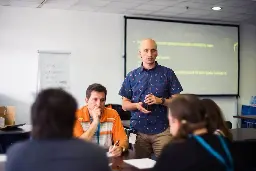Learn strategies for writing expressive image descriptions while maintaining current accessibility best practices.

How do you write alternate text for a work with visual artistic merit?
- How you balance too many words versus sufficient details?
- What details should come first?
- How do you account for different audiences, their needs and preferences?
- Should it be written by the original artist or a professional describer?
In a recent IAAP webinar, inclusive media expert Joanne Pak explained an initiative to answer these questions and more.
The Literary Image Description (LID) Best Practices Guide is a Canadian government-funded project aiming to:
> offer a more vivid and engaging approach to writing image descriptions in an effort to make art and literature more accessible to all readers everywhere.
Visit the project website to download a well-researched and illustrated guide in EPUB or PDF. Then maybe next time you see a painting, sculpture, comic strip, or even clever set of visual instructions, you can take a swing at making your own image description*!
*But of course, don't publish unless you first talk to the author or do sufficient research into the intent!
WWCode Advocacy Town Hall | Radical Inclusion: Empowering Accessibility in Tech 💫 Join the WWCode Global team and our panel of DEI experts to learn how to advocate for yourself and others on issues of accessibility for a more equitable tech industry! 💫 🤝 About WWCode Advocacy Town Halls Wome...
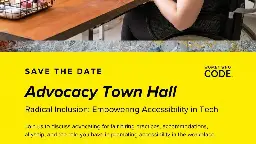
This Tuesday, 2023-10-24: Women Who Code Advocacy Town Hall moderated by AmyJune Hineline ( @volkswagenchick@drupal.community )
From the event description:
> - Hiring Process, Getting the Job, and Support at Work: Know the challenges and opportunities for individuals with disabilities throughout the hiring process, workplace support, and career growth. > > - Visible and Invisible Disabilities: Understand and define visible and invisible disabilities, and how they affect individuals in the tech industry.
> Legal Rights and Responsibilities: Learn about legal rights and responsibilities in hiring practices and actionable ways to advocate for yourself and others. > > - How Allies Can Be Advocates: Explore how allies can play a role in advocating for individuals with disabilities and creating inclusive workplaces, and how technologists can develop with accessibility in mind. > > - Access to Resources: Gain insights into accessibility resources and how you can find more support
Digital accessibility blogs and newsletters
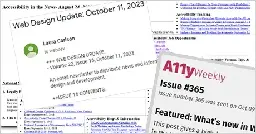
Shared by @onsman@aus.social, a list of experts and organizations to follow for news and ideas on digital accessibility.
Thanks for sharing. I asked this question elsewhere, and no one else has trouble with Zoom chat. Everything I hear is along the lines of this response at rblind: that Zoom makes it easy for all users to show or hide the chat as needed.
Maybe you're right about guidelines and moderation. At the very least, maybe it would be good to add a statement to the accessibility talk at the beginning of the meeting. Like:
- Tell people how to enable captions.
- Tell people how to download presentation files to view at their own speed.
- And also tell people how to turn off the chat if it is too distracting.
Thanks for sharing. It sounds like all the technology is in place for people to use or hide the chat as needed.
A statewide team ramped up digital accessibility efforts created an online resource center that can help anyone make accessible maps.

Employees of the state of Minnesota in the United States have created a "Maps Community of Practice" to advance the accessibility of digital and print maps.
- Story: How Minnesota Is Making Maps Accessible
- Resources: Minnesota IT Services Map Accessibility
- Webinar: Maps for All – Building Accessible Maps at the Great Lakes ADA Center website


cross-posted from: https://beehaw.org/post/7716703
Earlier this month I logged on to a Zoom webinar that had chat enabled. The meeting had a large attendance. The chat quickly filled up with dozens of people sharing their city or country, and later commenting on technical problems.
Some screen reader users had a difficult experience due to the heavy use of the chat. Here are three bits of feedback:
!A comment reading "All this chatting is very disruptive to those of us using screen readers"
!A question reading "Can people please stop messing up the chat? The preview is distracting."
What is your opinion on this aspect of videoconference chat etiquette? I'm not talking about offensive or dangerous content--just the volume of content.
- Should frivolous chat messages be avoided, so that screen reader users don't miss important chat messages?
- Or is important that chat can be a chaotic free-for-all, to get the full Zoom experience?
- Does anyone have personal experience with this?
- Does anyone have a preferred etiquette guide that covers this?
***
Thumbnail image is an illustration of over a dozen empty word balloons, overlaid on each other in a chaotic mess. Image by Gerd Altmann from Pixabay


This week I logged on to a Zoom webinar that had chat enabled. The meeting had a large attendance. The chat quickly filled up with dozens of people sharing their city or country, and later commenting on technical problems.
Some screen reader users had a difficult experience due to the heavy use of the chat. Here are three bits of feedback:
!A comment reading "All this chatting is very disruptive to those of us using screen readers"
!A question reading "Can people please stop messing up the chat? The preview is distracting."
What is your opinion on this aspect of videoconference chat etiquette? I'm not talking about offensive or dangerous content--just the volume of content.
- Should frivolous chat messages be avoided, so that screen reader users don't miss important chat messages?
- Or is important that chat can be a chaotic free-for-all, to get the full Zoom experience?
- Does anyone have personal experience with this?
- Does anyone have a preferred etiquette guide that covers this?
***
Thumbnail image is an illustration of over a dozen empty word balloons, overlaid on each other in a chaotic mess. Image by Gerd Altmann from Pixabay
Enjoy millions of the latest Android apps, games, music, movies, TV, books, magazines & more. Anytime, anywhere, across your devices.
Four puzzle games: The Room, The Room Two, The Room Three, and The Room: Old Sins
Big update to Firefox (117) dropped if using a screen reader. YouTube video lists, and videos themselves, now scroll much better than before. Possibly best example of infinite scroll on Windows now, although I'll wait for consensus on this one. Thanks to @jcsteh@aus.social for listening to @quinn an...
cross-posted from: https://beehaw.org/post/7474838
> Via @nick@hkc.social: > > Big update to Firefox (117) dropped if using a screen reader. YouTube video lists, and videos themselves, now scroll much better than before.
Big update to Firefox (117) dropped if using a screen reader. YouTube video lists, and videos themselves, now scroll much better than before. Possibly best example of infinite scroll on Windows now, although I'll wait for consensus on this one. Thanks to @jcsteh@aus.social for listening to @quinn an...
Via @nick@hkc.social: > Big update to Firefox (117) dropped if using a screen reader. YouTube video lists, and videos themselves, now scroll much better than before.
TetraLogical is proud to sponsor State of the Browser on Saturday 23 September 2023. Brought to you by London Web Standards, this is both an in-person and online conference held at The Barbican Centre in London. We’re doing a free giveaway of two in-person tickets and three online tickets. If in...
This Friday, 2023-08-25, a vendor is randomly choosing winners to receive a free ticket to a September conference hosted by London Web Standards.
Entry is by replying to this post on Mastodon.
Attached: 2 images "Papers, Please" is 10 years old today! Hell of a time slip. Thank you to everyone that's supported me and my games over the last decade. To celebrate: * $1.99 sale until the weekend, all platforms * Fresh goods + soundtrack * $100K donation to rescue.org * New de-make: "LCD, P...
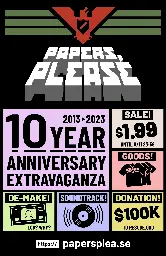
Follow the creator at @dukope@mastodon social
Now if Spotify would finally add a light mode.
EBook reader and ebook documents management with rich features.
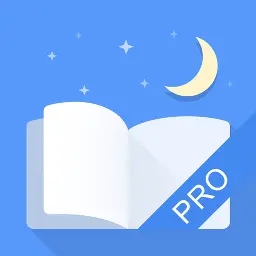
Meta's new social media network, Threads, launches without taking into account how users with various disabilities access software.
As a follow up to a similar post from last month, here is a more detailed list of barriers to access, compiled by AbilityNet.
- Inaccessible images
- No headings
- Navigation issues
- Button trouble
- Reloading difficulties
- Color contrast problems
- Media issues
- Portrait-only orientation
I edited my post and added a link to the font.
Via the A11yTalks webinar Accessibility in Action: Indigenous Communities by Meggan Van Harten
Link to font:https://www2.gov.bc.ca/gov/content/governments/services-for-government/policies-procedures/bc-visual-identity/bc-sans
>Several typefaces were examined that matched the criteria and a handful of these were tested. Noto Sans stood out as an option as it already had an extensive set of characters supporting over 800 languages, including many Indigenous languages in Canada. The typeface was also originally designed for enhanced readability on-screen. > >Under an open-font license, Noto Sans presented the opportunity to access the font files and modify and improve its character sets. With expertise from a typographic Indigenous language expert, and from FirstVoices (an initiative of the First Peoples’ Cultural Council), additional characters and syllabic glyphs were added to support Indigenous languages in B.C. This new typeface was named BC Sans and first launched in 2019.
>Accessible Ohio is the first-ever coordinated effort in Ohio to support businesses, communities, attractions, and venues in becoming more accessible and inclusive. > >... > >We are seeking input on strategies to reach local partners and share information about Accessible Ohio services, personal or observed experiences in public activities and environments, examples of ways to overcome barriers to access, and possible funding resources for partners.
If you have a disability and have been excluded at a place of public accommodation in Ohio, this event may be an opportunity to bring the problem to the attention of state employees.
Via the Focus State newsletter:
>This is an article about a lawsuit filed against a digital accessibility advocate named Adrian Roselli. Adrian has been outspoken against a type of software called an overlay. This type of overlay promises to make websites accessible for disabled people with just one line of code.
Meta’s latest venture, Threads, aimed at luring users away from Twitter, is receiving criticism for its lack of accessibility features, leaving users with disability feeling left behind. The new platform, despite its attempt to compete with Twitter, offers limited accessibility tools, customization ...

With Meta’s claim that Threads will “focus on kindness,” it remains unclear how accessibility aligns with the platform’s definition of inclusivity. As CEO and founder of web accessibility company UserWay, Allon Mason, stressed, social media should be accessible to everyone, including the 1 in 5 individuals living with disability.
The 33rd anniversary of the Americans with Disabilities Act (ADA) falls on Wednesday, July 26, in just about two weeks. Will that be the day that official notice of long-promised web accessibility regulations for state and local governments in the United States is finally published? The official

>This is an article about the delay in web access regulations. The regulations will help state and local government agencies in the United States make sure websites work for disabled people. They will help people with disabilities fully participate in all activities of state and local governments. This includes education, recreation, citizenship, and more. The regulations have been delayed. They are now stuck in a part of the United States government called the Office of Management and Budget, or OMB. The OMB helps the President of the United States meet their goals about what regulations are needed. The wait for regulations has been too long. The Americans with Disabilities Act is about to have its 33rd anniversary. It is long past time for these regulations.
I subscribed to Pocket Casts when it was owned by public media entities, and it worked well. But after they sold it off, I just switched to AntennaPod and it does everything I need too.
Recently there was a thread in the IAAP discussion board about "dyslexia simulators," software that is meant to simulate the experience to people who do not have dyslexia. The simulators work by taking text on a web page and randomly switching letters around.
- Here is an example at Harvard's Teaching and Learning Lab.
- You can also go to the Google Web Store and get a Chrome extension that will do the simulation on any web page.
In the discussion thread, there was a dissenting voice who shared an article by Carolyn D. Cowen, who objects to the use of these simulators.
To quote Cowen:
>As a person with dyslexia, as someone with dyslexia running throughout generations of both branches of my family, and, finally, as an educator who has taught countless children and adults with dyslexia over the decades, I feel pretty confident saying that this simulation is NOTHING like what it is like for most people who have dyslexia. > >The simulation is a devilishly clever coding trick and well intentioned, but contrary to the dramatic headlines, it does little to deepen anyone’s understanding about what having dyslexia is really like.
...
> the simulation’s likely take-away for the casual viewer with little or no knowledge of dyslexia is that this problem primarily is in the visual domain. From there, it is a short hop to assume that the solutions lie in the same domain.
...
>And those notions can lure families into time- and resource-wasting wild-goose chases pursuing costly, ineffective interventions.
If you have dyslexia, would you be interested in commenting on these ideas?
- Do you think dyslexia simulations are dubious?
- Do you have a preferred way of describing your experience?
In her weekly Better Allies newsletter, Karen Catlin highlights the importance of using stock images featuring people from underrepresented groups.
She maintains a list of sources for such images, to which she has just added a collection of public domain images from the Consumer Product Safety Commission of the United States federal government.
I just went to https://cohost.org/vogon with the screen reader NVDA and tried to browse the graphics of electronics there.
Good news: the web page is coded correctly, and I heard alt text for the images as expected. Kudos to cohost, and also thanks to you for working to include as many people as possible.
 dankeck @beehaw.org
dankeck @beehaw.org Web developer and #IAAPCPWA. Digital accessibility, amateur photography, Christianity, 8-bit video games, sci-fi books, pop psychology and cognition. He/him.
Mastodon: @dankeck@a11y.social
